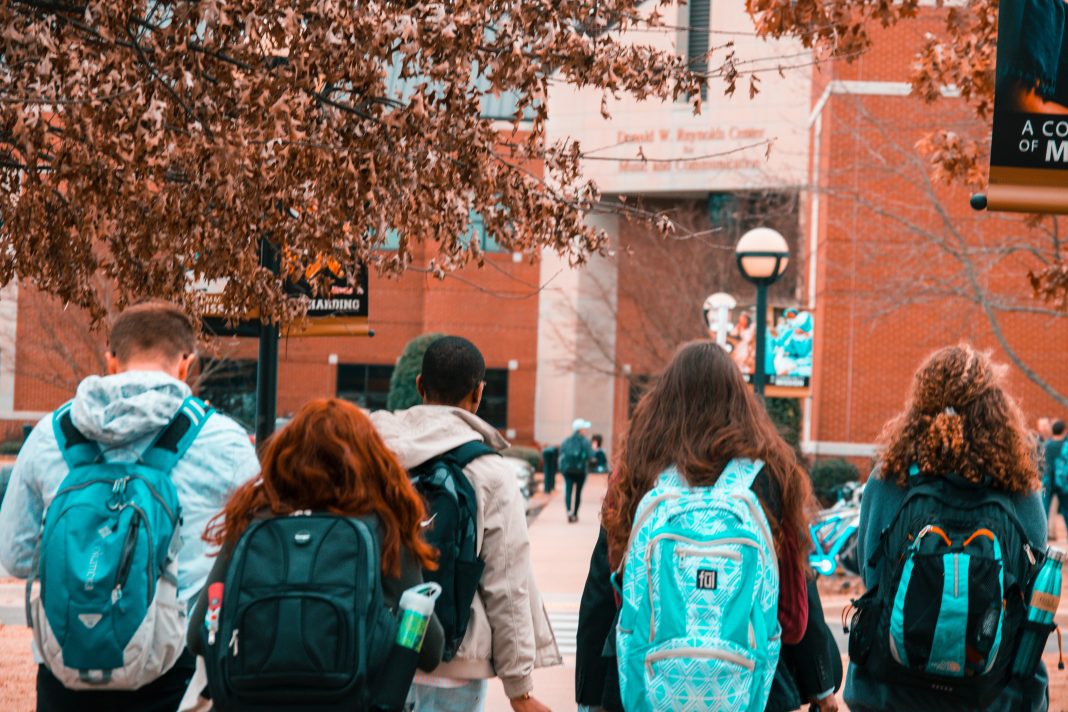If you have little ones heading off to school this year, then it’s time for your family to prepare for school emergency drills. Don’t stress though, you got this!
School emergency drills are vital for creating a safe, supportive learning environment in schools. We all hope emergencies never happen, but children should be empowered to keep themselves safe just in case. How emergency drills are carried out varies from school to school and state to state as do the requirements to hold drills. At a minimum, schools should have protocols in place to lockdown, hold, shelter-in-place, evacuate, and secure which is sometimes called lockout. No matter what schools name their protocols, its important drills are presented to kids in trauma-informed (non-scary) and developmentally appropriate ways.
What’s important to keep in mind is that each of these protocols are just actions students and staff can take to increase safety in potential emergency situations. And the great news is you don’t have to wait for the school, you can start this process at home.
Step 1
Get a list of safety protocols from your kid’s school and get a good understanding of what will happen at the classroom level.
Step 2
Then, start finding little safety “wins” you can point out every day highlighting how great your kid is at practicing safety. This can be as simple as praising them for:
- Wearing a helmet when they ride a bike.
- Coming to get you when someone knocks on the front door.
- Putting on their seatbelt in the car.
- Looking both ways before crossing the road.
- Waiting for an adult to be present before playing in water.
Kids and adults practice being safe in different ways all day long, so often we sometimes don’t realize it. Remember to focus on the safety practice, not the threat or hazard.
Step 3
As you get closer to back-to-school time, ask your kids about the drills they practice. All schools should be doing emergency drills. If your kids haven’t been to school yet or your kid’s school doesn’t do drills, talk with them about what you want them to do at home in an emergency. This is a great opportunity to talk about professional helpers, like firefighters and police officers, who show up fast in an emergency. Empower your kids by inviting them to practice a home fire drill with you and celebrate their success after you do a practice.
This is also a great opportunity to set up a fun outing with your kids to visit your local fire or police departments. Schedule a time to see their emergency vehicles, get photos, and stickers! First responders love connecting with their communities and it’s great to introduce kids to helpers before they are in need. Remember, you can do this and so can your kids.
Step 4
Set the tone. Kids will co-regulate with you; they will match your emotions. If you are relaxed, confident, and open to these topics, your kids will sense it, and this will help them to feel calm and grounded in these discussions.
As you talk about safety, acknowledge your kids’ feelings and if they get stuck in an uncomfortable space, bring in a little redirection and humor. Help them shift by focusing on how good they are at practicing safety and remind them that helpers are always ready to jump into action.
You can also use challenging feelings, like anxiety, as a chance to chat about the amazing human brain. They lead to beautiful creations and brilliant ideas but sometimes, brains focus on things they think are helpful and protective but really aren’t. When a brain gets stuck in a “what if” loop, it’s working hard to stay safe. But for kids in emergencies, their brain doesn’t have to figure out “what if,” because really smart adults have studied emergency situations and know what needs to happen to keep kids safe.
If your kid gets stuck in a negative “what if,” try a fun “what if.”
“What if flying puppies showed up? Or a rainbow-colored unicorn started walking down the sidewalk?”
Let your kid know you are confident in the helpers. Let your kid know you are confident in them! They are smart, skilled, and empowered to keep themselves. You know this because they do it every single day.
About the author:
A School Emergency Management Expert, Trauma Informed Practices Consultant, and former Reserve Law Enforcement Officer, Claire Marie has led efforts to support community and systems level trauma informed and resilience practices through education, implementation, and evaluation since 2015. Her work spans across K-12 school emergency preparedness & management, school safety & prevention systems, non-profits, community service agencies, and law enforcement mental health and wellness. Claire Marie often speaks at conferences including most recently the ISACS national conference, Joffe Emergency Services and the OAESD conference. She is passionate about approaching emergency preparedness and management through a trauma-informed lens and supporting schools to do the same. Working as a leader in K-12 school safety and emergency management, Claire Marie often hears about young kids and adults (parents and staff) struggling with lockdown drills. In her new book, Sammy the Sasquatch: Welcome to Crittertopia [Sammy & Friends, April 18, 2023] she hopes to support adults in lifting the veil of secrecy and silence around practicing lockdown drills by creating trauma-informed stories along with a magical world that safely introduce kids to different practices that empower them to keep safe, every day, regardless of what is going on in the world.



















